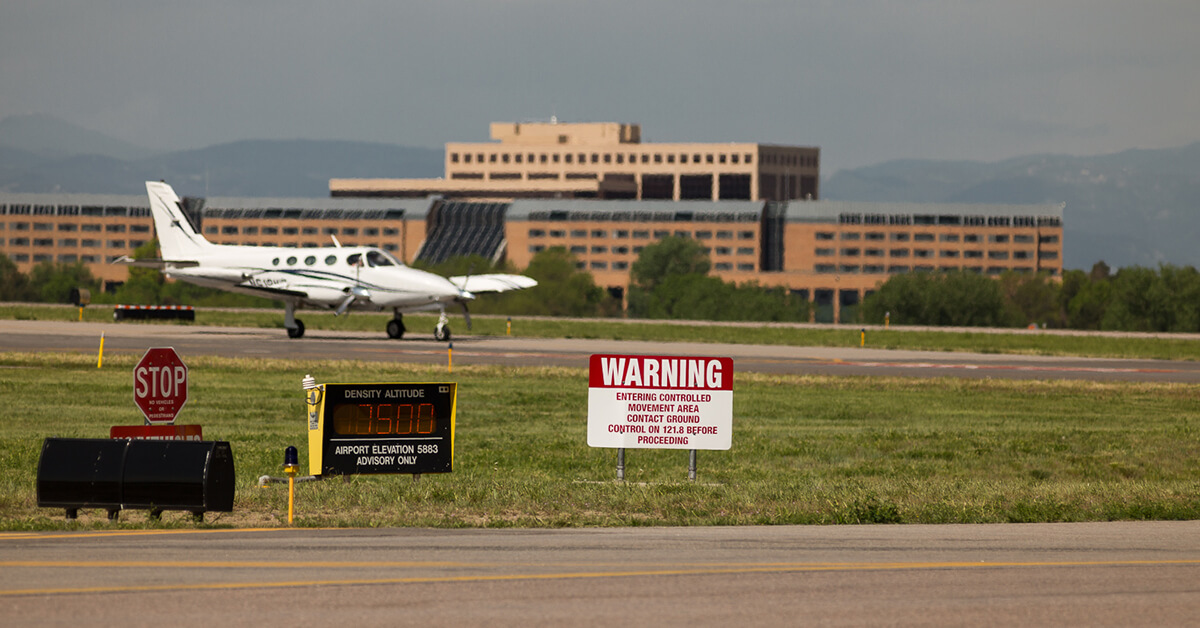
July 14, 2020
Decreased air traffic levels during the pandemic, seemingly incongruously, may cause aircraft noise to be more noticeable – making it even more important now for pilots to be good neighbors to communities around airports.
“We are at a pivotal time in the way that we treat noise,” said Alex Gertsen, NBAA director of airports and ground infrastructure and moderator of the July 14 NBAA News Hour webinar “COVID-19 Changing Aviation Noise Expectations: New “Fly Quiet” Info You Need.”
Timothy Middleton, C.M., senior consultant at HMMH, opened the webinar with a historical look at aviation noise regulations, explaining how noise abatement has evolved over the years from a patch-quilt of mandatory local restrictions in the 1980s, some of which remain grandfathered, to mostly voluntary procedures at airports today after federal legislation in 1990 created a more rigorous process.
Now, decreased traffic as a result of the pandemic, makes aircraft noise more conspicuous to the communities around airports. Meanwhile, pilots experiencing wide open skies from the flight deck can be lulled into taking shortcuts and unintentionally varying from preferred noise abatement routes.
Jeff Smith, chief helicopter pilot of ROP Aviation, board member of the Eastern Region Helicopter Council and chair of the NBAA Access Committee, shared the history of East Hampton, NY’s efforts to impose mandatory noise restrictions at its airport. Aviation groups initiated legal action against the town challenging its regulations. The lengthy legal fight meant operators went through an entire summer season with onerous restrictions.
“It was a very expensive process… but we ultimately succeeded,” said Smith. The town, now working collaboratively with the aviation community, has developed voluntary noise abatement procedures, including curfews and preferred routes currently in place.
Brad Pierce, chair of the Centennial Airport Community Noise Roundtable, explained Centennial’s “Fly Quiet” educational efforts, which highlight residential areas around the airport and encourage pilots to avoid those areas. He also shared the airport’s experiences with neighbors since the pandemic began.
In March and April, at the height of COVID infections in Colorado, the governor issued a stay-at-home order, and some local residents called the noise complaint line about airplanes flying from Centennial – thinking that planes weren’t supposed to be flying. In fact, many aircraft operations were considered essential service and were permitted to fly. That changed in late May, after the stay-at-home order was lifted.
“May 22 operations [at Centennial] were actually higher than before COVID due to pent-up demand,” said Pierce. “People wanted to get out and fly.”
Gabe Andino, manager of noise abatement and environmental compliance at Teterboro Airport and chair of NBAA’s Access Committee Airports Working Group, his explained the airport’s noise abatement procedures, which are stricter than some other airports. Aircraft with frequent violations can be banned from operating at Teterboro.
Andino mentioned the new RNAV noise abatement approach coming to Teterboro, and strongly encouraged attendees to avoid late night/early morning operations and to use preferred runways for departures at night that have a less significant impact on nearby communities.


 International Business Aviation Council Ltd.
International Business Aviation Council Ltd.